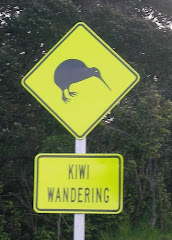
We have just been fogged.
It happens every couple of days at dusk. I can hear it coming and before long the smell begins to eek its way into the house through ill fitting windows and walls that hover millimetres above ground. We got fogged in Singapore too, about once a fortnight, but on the 19th floor I didn’t even have to move the washing.

Fogging, with noxious insecticide, is used to drive the Aedes aegypti mosquito, the carrier of the dengue and the yellow fever virus, away. It is commonly used in areas where the dengue virus exists but some countries are beginning to question its effectiveness especially considering its toxicity. Singapore’s ‘If they breed you will bleed’ (referring to the possibility of contracting the more serious hemorrhagic version of the virus) campaign is probably one of the most militant and relentless yet there are still outbreaks every year often reaching epidemic proportions.

Aedes aegypti is around all day but most active during the muted hours of dawn and dusk. I say ‘she’ because it is only the female mosquito that bites and Dengue is only the result if she has picked up the virus during her bloody travels. She is a clever little vampire who has, over the years, adapted to become a frighteningly efficient biter and breeder. She prefers to bite humans so much she has developed some sneaky tricks to make sure she gets her mark. Firstly, unlike other mosquitoes, she is quiet, no distinct ‘there’s a mossie in the room’ whine. She is smaller than the average blood sucker and she likes to attack from below, from under chairs, tables and desks, and bites low too, on ankles and tropically exposed feet. She is a speedster, completing her covert mission faster than other mosquitoes and she never strays too far from her prey living less than 90 meters from her food source and often in the same building. She prefers to lay her eggs separately (rather than attached in a raft like form as other mosquitoes do) in clean, even chlorinated water to enhance their chance of survival. What’s more, her eggs, which can also carry the dengue virus, can survive dry for more than a year.

We became acquainted with dengue while we were living in Samoa. We are a disgustingly healthy bunch usually (I blame the breastfeeding!!) even a cold is a rare event. One day I picked a very, very hot, lethargic headachy M up from school. I ripped his shirt off straight away looking for the telltale rash.
‘You have dengue’ I announced.
‘You have dengue’ the doctor said again later that day.
M couldn’t muster a response at all (and he’s the talker).
‘Home to bed’ said the doc. Panadol for the fever and the aches (it isn’t called ‘break bone fever’ for nothing) and water, lots of water.
His temperature kept rising until the thermometer read 40 C, 40.5C, 41C. We had a routine. For four days we arranged ourselves in lumps on his tiled floor and administered the panadol and water, he threw it back up, we put cold flannels on his forehead, he said he was cold, he slept, we slept, he had night terrors (on the rare occasion he has had a temperature this has always happened) we woke and then we began all over again. After four days he sat up and announced he was hungry. A couple of days later he was complaining of being bored and announced he wanted to go back to school. We were lucky but now if M gets it again there is a greater chance it will develop into the potentially fatal hemorrhagic version.
Dengue is actually caused not by one but by four related viruses. Compared to malaria, dengue is considered to be a minor problem. More than 500 million people die from malaria a year, for example, while dengue kills just 50 million, a ‘death rate’ of only around 2.5 percent of suffers. The economic costs of keeping it at bay and controlling outbreaks, however, run into the billions. And dengue is spreading, reappearing in countries that have been without a victim for over a decade and it seems to be more lethal. There is currently no cure but according to the Wall Street Journal (Nov 6 2007) there is a potential vaccine on it’s way. A small trial, carried out by French company Sanofi-Aventis, of 25 healthy adults ‘generated a protective immune response against all four strains of the dengue virus’.
There has also been some suggestion of genetic engineering, breeding male aedes (because the males don’t bite humans and therefore there is no risk of transfer of the GE gene) with a gene that becomes lethal at pupa stage should a crucial dietary ingredient, a ‘switch’, a way of controlling the rate of spread, be absent. According to the New York Times (Oct 10 2008), this mosquito has already been created, with a tetracycline ‘switch’. Raised on pools with the antibiotic present the mosquito will self destruct in the clean pools it prefers outside of the laboratory.

I’m not a big fan of genetic engineering and vaccinations are not without their own controversy but something needs to be done. Every year dengue makes millions of people around the world miserable and scared. In Cambodia, as it is in many developing countries where dengue reigns supreme, most of the victims are children. By mid October last year dengue had infected more than 38000 people and killed 389. Even if there were a vaccine it is doubtful the Cambodian Health Ministry, with an annual budget of AUD3.40 per person, could afford it. Instead they focus on education: use mosquito nets, keep an eye on the children, burn rubbish, do not allow pools of water to collect- but living conditions are often primitive, impossible to keep dry and parents are working and unable to keep a constant eye on their littlies.
‘Bird flu is a threat to the Western world, so they pour money and commitment into that,’ says Dr Richner's of Cambodia’s Kantha Bopha hospitals(abc.net.au).
‘But dengue? There's no threat to the United States or Europe so nobody's interested.’
 (Richie McCaw holding the Bledisloe cup aloft from-crazy-muli.vox.com)
(Richie McCaw holding the Bledisloe cup aloft from-crazy-muli.vox.com)





























































